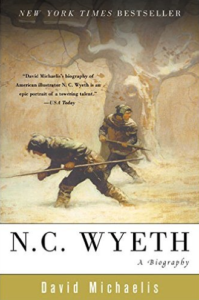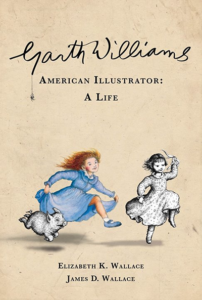When I finally began writing my biography of Pete Seeger, one of my main decisions involved the story I would tell. I had roughly 15,000 words — and I could have written that much about any one year of Pete’s life. In fact, I needed five drafts to craft a clean and uncluttered saga. In the end I decided not to dwell on Pete’s music, which would be unknown by contemporary children, but focused instead on Pete as a social activist. After all he stood on the right side of history on unions, First Amendment rights, Civil Rights, and the Peace and Environmental movements.

 In analyzing narrative nonfiction, readers always need to ask what story an author has chosen to tell. Last week I read a fabulous new adult biography, Elizabeth and James Wallace’s Garth Williams. It now stands on my bookshelf alongside another superb biography, N.C. Wyeth by David Michaelis. If you love the golden age of illustration, both books contain abundant information. But the story they tell differs. Michaelis focuses on the psychology, almost family pathology, of Wyeth. Basically he puts Wyeth on a psychiatrist’s couch for an in-depth analysis. But the Wallaces, who do mention some of the bizarre details of Garth Williams’s life, don’t dwell there. They explore his relationships with Laura Ingalls Wilder, E. B. White, and Margaret Wise Brown among others. They show letters between Williams and his editor Ursula Nordstrom. Even better — be still my beating heart — they provide contract and revenue details. Since I teach a course in the History of Children’s Book Publishing at Simmons College, I cannot even begin to tell you how difficult, almost impossible, it is to locate that type of information. In short, I recommend both books. But the Garth Williams biography satisfied me more as a reader — because of the story the writers set out to tell.
In analyzing narrative nonfiction, readers always need to ask what story an author has chosen to tell. Last week I read a fabulous new adult biography, Elizabeth and James Wallace’s Garth Williams. It now stands on my bookshelf alongside another superb biography, N.C. Wyeth by David Michaelis. If you love the golden age of illustration, both books contain abundant information. But the story they tell differs. Michaelis focuses on the psychology, almost family pathology, of Wyeth. Basically he puts Wyeth on a psychiatrist’s couch for an in-depth analysis. But the Wallaces, who do mention some of the bizarre details of Garth Williams’s life, don’t dwell there. They explore his relationships with Laura Ingalls Wilder, E. B. White, and Margaret Wise Brown among others. They show letters between Williams and his editor Ursula Nordstrom. Even better — be still my beating heart — they provide contract and revenue details. Since I teach a course in the History of Children’s Book Publishing at Simmons College, I cannot even begin to tell you how difficult, almost impossible, it is to locate that type of information. In short, I recommend both books. But the Garth Williams biography satisfied me more as a reader — because of the story the writers set out to tell.

2 Responses
I have some very beautiful books of Rackham and Dulac, and also a copy of Charles Robinson’s Alice. (I was inspired by his black and white rendering of The Pool of Tears). The Belle Époque of children’s illustration was indeed so because artists were never condescending with children. They gave their very best as they always should.
I quickly discovered that there is no difference between children and adults regarding sensitivity. One is either sensitive to what one sees, or not. Some children see everything immediately. Others see nothing. The same applies to adults.
Yes these artists, like Wyeth, considered themselves artists. Some of the finest illustration we have ever seen comes from this period.